What is marketing channel? A marketing channel is any platform, strategy, or medium a business uses to communicate, connect, promote, and deliver products or services to its target audience. These channels include both traditional and digital mediums, from print ads and TV commercials to social media and email marketing. They facilitate the process of reaching customers at different stages of the buying journey.
Each marketing channel has unique function, strengths, and businesses often use a combination of them (an omnichannel approach) to reach a broader audience, enhance customer experiences, and optimize marketing effectiveness. By integrating multiple channels into a cohesive strategy, businesses can create a seamless customer experience that drives growth.
In 2025, marketing channels are more advanced, diversified, and essential than ever. The right combination of channels can elevate brand visibility, boost sales, and improve customer experience. But with so many options available, how do you determine the best approach for your business? In this guide, we’ll explore the “What is marketing channel system?”, “What is marketing channel example?”, and how to leverage them effectively for long-term success.
- What Is Marketing Channel of Distribution?
- What Is Marketing Channel System?
- Digital Marketing Channels: Connect, Engage, Convert
- Indirect Marketing Channels: Building Trust & Reach
- Direct Marketing Channels: Targeted, Personal, Powerful
- Traditional Marketing Channels: Do They Still Matter?
- The Role of Marketing Channels
- Resources for ‘What is Marketing Channel’
- FAQ – What Is Marketing Channel
What Is Marketing Channel of Distribution?
Marketing distribution channels are the pathways through which products and services reach consumers, encompassing both physical (like stores) and digital (like e-commerce) methods. These channels may involve both direct and indirect sales strategies, and when combined, they are referred to as Omnichannel marketing.
Omnichannel marketing is a hybrid approach that integrates multiple distribution channels to provide a seamless and consistent customer experience across all touchpoints, both online and offline. This marketing strategy allows businesses to engage with customers through various platforms, such as social media, email, mobile apps, physical stores, and websites, ensuring that messaging and branding remain unified regardless of the medium.

What is a marketing channel system? Omnichannel marketing enhances customer satisfaction by allowing individuals to interact with a brand on their preferred platform while retaining continuity of service and communication. By collecting and analyzing data from multiple channels, businesses can create more personalized marketing campaigns, improving engagement, driving sales, and fostering customer loyalty.
For example, a retail brand like Starbucks uses an omnichannel approach by enabling customers to order through their mobile app, receive personalized offers via email, and pick up their orders in-store—all while maintaining a consistent brand experience across these different channels. So, how do you determine “What is the marketing channel system for your business?”.

What Is Marketing Channel System?
Choosing the right marketing channels can be overwhelming, especially with so many options available. Before diving into the selection process, it’s crucial to start by defining your marketing goals, audience segments, and available resources (e.g., budget, manpower, logistics, and production rates). Here are the key considerations for choosing the right marketing channels for your business:
Key Considerations:
- Target Audience:
Where do they spend time online? What type of content do they engage with? - Marketing Goals:
Brand awareness, lead generation, customer retention, or conversions? - Budget & Resources:
What can you invest in terms of time, money, and expertise? - Channel Relevance:
Which platforms align with your product, service, business model and industry?
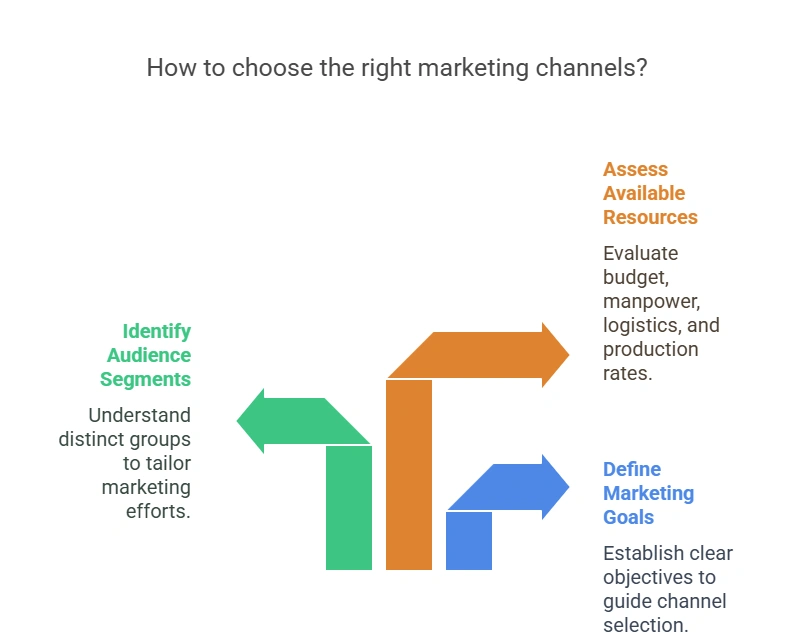
For instance, if brand awareness is your primary goal, platforms like social media or influencer marketing might be ideal. On the other hand, if you’re looking to nurture leads and convert them into customers, email marketing and SEO would be more beneficial, together with a well-optimized website to guide them through the purchasing process.
Once you know your objectives, you can make an informed decision that supports your marketing channel choices, aligning them with your broader business strategy. Each channel serves a different purpose, so make sure to choose the ones that will help you achieve your desired outcomes. In the next section, we’ll answer “What is a marketing channel example?” and how to leverage them effectively for long-term success.
Digital Marketing Channels: Connect, Engage, Convert
While traditional marketing methods still hold value, digital marketing channels have become dominant in reaching and engaging modern audiences. These digital platforms offer precise targeting capabilities, allowing businesses to reach specific demographics based on interests, behavior, and location.
Digital marketing is particularly effective for real-time interactions, personalized campaigns, and driving measurable results. With the ability to track performance and optimize strategies, digital channels provide a scalable and cost-effective way to connect with consumers, build brand awareness, and drive conversions.

1. Social Media Marketing
Engaging with Customers Where They Spend Time
Social media platforms like Instagram, Twitter, LinkedIn, and TikTok allow businesses to connect with their audience in real time. These platforms offer both organic engagement opportunities and paid advertising options, making them powerful tools for building brand awareness. They provide a unique way to engage with audiences, build relationships, and share content that resonates with potential customers.
For instance, on Instagram, you might use visually appealing posts and stories to showcase your products, while Twitter allows for real-time engagement and conversations with your followers. LinkedIn is ideal for establishing thought leadership and networking with professionals in your industry. By creating a strong social media presence, you can increase brand awareness and drive traffic to your website.
Understanding the dynamics of each platform will help you tailor your messaging and reach the right audience. Whether through organic posts or paid ads, social media is a cornerstone of modern marketing channels for growing your business.
Best Social Media Practices:
Post daily, high-quality content tailored to each platform to accelerate social growth.
Engage with followers through comments, direct messages, and interactive features like polls.
Use the same colors, font family, and template style (brand consistency) across different platforms.
2. Content Marketing and SEO
Driving Organic Growth to Your Website
Content marketing and SEO go hand in hand. They are essential for businesses aiming to build sustainable growth. With a focus on providing real, helpful value to your audience, your content can work as an ongoing marketing asset that brings in new leads, boosts conversions, and enhances customer loyalty.
What is SEO and content marketing? SEO (Search Engine Optimization) is the process of optimizing your website and content so that it ranks higher on search engines like Google. Content marketing involves creating and sharing high-quality, valuable content that addresses the needs and interests of your audience. Together, they are incredibly powerful marketing channels that can attract organic traffic and drive long-term results.
When you invest in SEO and content marketing, you’re creating long-term value for your business. Well-optimized content not only improves your website’s visibility but also engages visitors, increases trust, and nurtures customer relationships. Over time, this helps build your brand’s authority in your industry and drives consistent traffic to your site without relying on paid ads.
Key SEO Strategies:
Use keyword research tools (e.g., WordTracker) to target relevant search terms on Google.
Create high-quality, informative, and engaging blog posts, guides, and videos.
Optimize website performance, including loading speed under 3 seconds and mobile usability.
3. Video Marketing
Captivating Your Audience with Visual Content
Video marketing has become one of the most compelling tools for capturing attention, conveying messages quickly, and driving customer action, offering an immersive experience that text or images alone cannot provide. The versatility of video content makes it applicable across a wide range of marketing channels. Platforms like YouTube, TikTok, and Instagram Reels offer immense potential for brands to educate, entertain, and convert audiences.
Videos enable brands to visually demonstrate their products or services, showcase customer testimonials, or share valuable insights in an engaging and easily digestible format. As consumer behavior increasingly favors multimedia content, brands that integrate video into their marketing strategies are able to create a more dynamic and memorable presence, leading to higher engagement rates, increased brand awareness, and enhanced customer loyalty.
Videos are also highly shareable, making them ideal for organic growth and virality across social networks. Furthermore, video marketing provides the opportunity to incorporate data-driven insights into content creation. By analyzing viewer behavior, engagement rates, and conversion statistics, marketers can fine-tune their video strategies to better align with their target audience’s preferences.
Effective Video Marketing Tips:
Capture user attention within the first 3 seconds, deliver key messages quickly, and keep your videos short.
Optimize your videos for smartphones, use vertical video formats and ensure fast loading times.
Every video needs a Call to Action (CTA) guiding viewers on the next step (e.g., sign up, purchase).
4. Email Marketing
Personalized Customer Engagement
Email marketing remains one of the most effective and personal marketing channels for nurturing leads and driving conversions. With advanced tools to segment audience, automate email sequences and track engagement, businesses can deliver optimized campaigns directly to their audience segments, ensuring they’re reaching segments with personalized content that drives conversions.
Email marketing allows you to engage customers with tailored newsletters, special offers, product updates, helping nurture leads and build lasting relationships at each stage of their buyer journey. The beauty of email marketing lies in its ability to be highly targeted, ensuring that you’re sending the right message to the right people at the right time.
Effective Email Marketing Tips:
Personalize email subject lines and content with copywriting tactics to increase open rates.
Use automation for welcome sequences, abandoned cart reminders, and promotional offers.
Track email metrics (e.g., open rates, subscriber number) to optimize future campaigns.
5. SMS and WhatsApp Advertising
Straightforward and immediate communication
SMS marketing leverages the ubiquity of text messaging, with an incredibly high open rate—often over 90%—which makes it one of the most reliable ways to reach consumers. WhatsApp, on the other hand, has grown in popularity due to its rich media capabilities and widespread use for personal and business communication. By utilizing these platforms, brands can send time-sensitive offers, promotions, reminders, or personalized updates directly to users’ phones.
Both SMS and WhatsApp enable two-way communication, allowing businesses to create interactive customer experiences, from responding to inquiries to facilitating customer service. These channels are especially effective for local businesses, flash sales, event reminders, or any time-sensitive marketing campaign.
The key to success with SMS and WhatsApp advertising lies in ensuring a non-intrusive, value-driven approach. With limited character count on SMS and the opt-in requirement for WhatsApp, it’s crucial for brands to focus on delivering concise, relevant, and engaging content. Overuse of these platforms can lead to customer fatigue, so it’s essential to maintain a balance between frequency and quality of messages.
WhatsApp’s rich media options, such as images, videos, and voice messages, can help create more engaging interactions, while SMS remains best suited for concise offers or alerts. Both channels can be highly integrated with CRM systems, enabling businesses to send tailored messages based on customer behavior or preferences, fostering a more personalized marketing experience.
SMS and WhatsApp Advertising Tips:
Get opt-in consent before sending messages and allow users to opt-out to maintain trust.
Use customer data to craft personalized messages that speak to individual preferences or behaviors.
Time-sensitive offers should be delivered during peak hours but avoid over-saturating your audience.
6. Mobile Apps
Gaining market share where most web users are
Mobile apps allow for businesses to engage with customers directly on their smartphones, offering a personalized and convenient experience. By developing a branded mobile app, companies can create a direct communication channel with their customers, providing access to exclusive offers, product updates, loyalty programs, and personalized recommendations based on user preferences and behavior.
For example, Starbucks uses its mobile app not only to allow customers to place and pay for orders but also to send personalized promotions, track loyalty rewards, and enable seamless integration with their in-store experience.
Mobile apps can enhance customer retention by providing value-added services like push notifications, in-app messaging, and location-based promotions, encouraging users to stay engaged. Additionally, apps allow businesses to collect valuable data on user behaviors, preferences, and purchase patterns, which can be leveraged to refine marketing strategies and deliver more targeted and effective campaigns.
Essential Tips for Mobile App Success:
Keep the UX intuitive, fast, easy to navigate, and use clear CTAs to prevent high uninstall rates.
Boost app store ranking with relevant keywords, compelling descriptions, and catch-eye visuals.
Do App Store Optimization by improving speed, fixing bugs, and ensuring smooth functionality.
7. Authoritative Niche Websites
A Go-To Resource for Valuable Information
Authoritative niche websites, such as specialized blogs, review sites, and landing pages, serve as powerful marketing tools by providing highly targeted content and calls-to-action that resonates with the specific interests and needs of audience segments that are more likely to convert into customers. These websites are often built around a particular subject matter or industry, making them trusted sources of information for individuals seeking expert insights or solutions to specific problems.
Unlike general-purpose websites or larger platforms, authoritative niche sites foster trust due to their deep knowledge of the topic and focus on quality over quantity. By leveraging SEO strategies, creating engaging and informative content, and integrating lead capture mechanisms, niche websites can function as both advertising systems and conversion funnels.
By establishing credibility in a niche area, these websites can enhance brand visibility by attracting organic traffic from search engines, driving qualified leads directly to brands or products. Niche blogs, for example, can generate substantial inbound traffic by consistently publishing well-researched, relevant content that answers users’ questions or addresses their needs.
Review sites function as trusted intermediaries, influencing purchasing decisions by offering unbiased opinions and evaluations, which can significantly boost brand credibility and conversion rates. Additionally, landing pages serve as key components of digital advertising systems, offering a streamlined path for visitors to take specific actions, such as signing up, making a purchase, or requesting more information.
Leveraging Websites as Marketing Tools:
Ensure your content is in-depth, relevant, and helpful to the target audience to build trust and traffic.
Encourage user-generated content (e.g. reviews, testimonials, and discussions) to get social proof.
Optimize landing pages for conversion with clear, concise messaging and compelling calls-to-action.
8. Paid Advertising
Scaling Your Reach Quickly
Paid advertising is the most effective way to drive immediate traffic to products or services. Unlike organic strategies, which often require time to build momentum, paid ads allow businesses to gain immediate exposure across various platforms, including Google Ads, social media networks, and display networks.
By leveraging sophisticated targeting options such as demographics, interests, behaviors, and geographic location, paid ads can reach the most relevant audience segments with precision. This capability to segment audiences ensures that businesses can tailor their messaging to specific customer needs, increasing the likelihood of higher engagement and conversions. The immediacy of paid ads, combined with robust tracking and performance analytics, enables marketers to quickly gauge campaign effectiveness and make real-time adjustments to optimize their return on investment (ROI).
The scalability of paid advertising is one of its major advantages, allowing businesses to allocate budgets that align with their growth objectives. With the ability to scale campaigns up or down based on performance, companies can fine-tune their strategies (e.g., testing different ad formats) to maximize impact and cost efficiency. Additionally, paid advertising often integrates seamlessly with other marketing efforts, such as content marketing and influencer collaborations, creating a cohesive, multi-channel approach.
By continuously analyzing metrics such as click-through rates (CTR), conversion rates, and cost per acquisition (CPA), businesses can refine their strategies, increasing efficiency as they expand their reach. With advanced targeting and optimization tools, paid advertising remains a powerful tactic for businesses looking to grow quickly in competitive markets.
Paid Ad Categories:
Search Engine Marketing (SEM): Google Ads and Bing Ads.
Social Media Ads: Facebook, Instagram, LinkedIn, and TikTok.
Native Ads & Contextual Advertising: Ads placed within relevant content.
Indirect Marketing Channels: Building Trust & Reach
Indirect marketing channels allow businesses to leverage external networks and trusted intermediaries to reach a wider audience without direct interaction. By working with affiliates or influencers, companies can tap into new customer bases and benefit from the credibility and reach of these partners. Indirect marketing is particularly effective for expanding brand awareness and driving sales in markets or regions where businesses may not have a strong presence, offering a cost-effective way to scale marketing efforts.
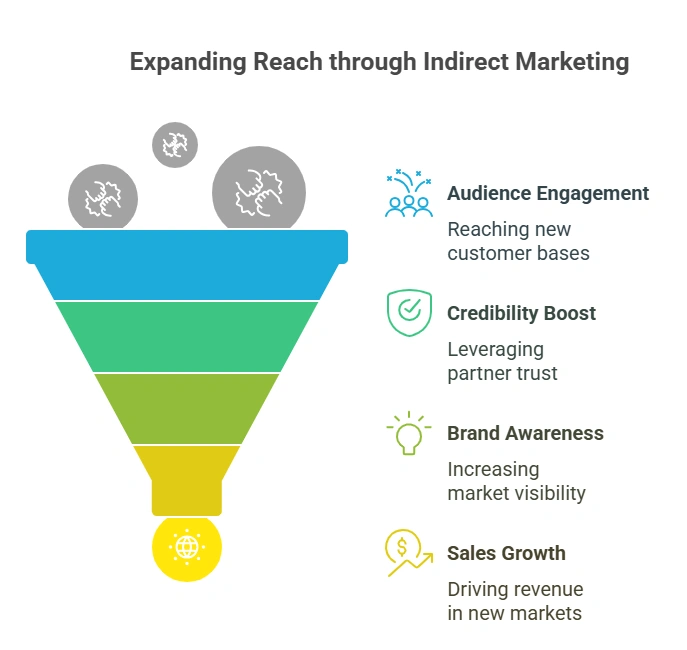
9. Influencer Marketing
Leveraging Trust and Credibility
Unlike traditional advertising, which may struggle to break through consumer skepticism, influencer marketing allows brands to tap into a trusted relationship between the influencer and their followers. Influencers, often seen as experts or peers, have established credibility within specific niches or communities.
When they endorse a product or service, their followers tend to perceive the recommendation as authentic, leading to higher levels of engagement, trust, and ultimately, conversions. This trust is a critical element in the success of influencer marketing campaigns, as it allows brands to reach a highly engaged and loyal audience in a way that feels more organic and less sales-driven.
The effectiveness of influencer marketing lies not just in the number of followers an influencer has, but in the authenticity of their voice and the relevance of their content to their audience. When selecting influencers for a campaign, brands must ensure that the values and interests of the influencer align with those of the target audience. Additionally, the influencer’s ability to create content that resonates with their followers in an engaging and credible manner is essential for driving meaningful results. This strategy is particularly effective for brands looking to increase credibility and customer engagement.
Influencer Marketing Tips:
Select influencers whose audience aligns with your products, services and target demographic.
Tap on followers more engaged and that convert more with small to mid-sized influencers.
Track influencer campaigns (i.e., engagement, conversions, and sentiment) to fine-tune strategies.
10. Affiliate Marketing
An Effective Performance-Based Marketing Tool
In this business model, affiliates promote a company’s products or services on their platforms (such as websites, blogs, or social media), and in return, they earn a commission for each sale or action generated through their referral.
The beauty of affiliate marketing lies in its cost-efficiency and scalability; businesses only pay for actual results, such as completed sales or lead conversions, making it a low-risk marketing strategy. By leveraging a well-structured affiliate program, businesses can:
- Increase revenue without having to manage every aspect of the sales process
- Expand brand awareness without upfront advertising costs
- Tap into new audience by leveraging affiliates who have built trust within niches
- Continuously scale businesses while maintaining control over commissions
Affiliate Marketing Tips:
Create attractive affiliate programs by offering high commissions, fast payouts, and training.
Choose affiliates with aligned audiences for better conversions and track their campaigns.
Provide affiliates with quality marketing materials and incentives for effective promotion.
11. Selling through intermediaries
Businesses Can Increase Product Availability
Selling through intermediaries, such as wholesalers, distributors, or retailers, allow businesses to scale quickly and expand their distribution channels into new geographic regions, all while reducing logistical and operational costs. Intermediaries often provide value-added services such as inventory management, localized marketing, and customer support, which helps the manufacturer focus on core business operations.
By partnering with intermediaries, companies can tap into existing networks and customer bases that they may not have the resources or infrastructure to access directly. For example, a manufacturer of consumer electronics might sell its products through large retailers like Best Buy or through online platforms like Amazon, allowing the brand to reach a wide range of customers without needing to manage individual sales directly.
Intermediaries Marketing Tips:
Partner with trusted, reliable intermediaries who align with your brand values and target market.
Equip partners with training, marketing materials, and incentives to sell your product effectively.
Track sales, customer feedback, and market trends to ensure intermediaries are meeting targets.
12. Public Relations (PR)
Media Coverage to Generate Positive Press and Credibility
Unlike paid advertising, PR is based on earned media, which often carries more credibility with consumers due to its independent nature. Public relations (PR) focus on building and maintaining a positive image for a brand by fostering strong relationships with media outlets, journalists, bloggers, industry influencers, and the public to gain exposure in trusted media channels.
PR efforts aim to generate favorable press coverage, manage brand reputation and awareness, influence consumer attitudes, and shape public perception through news stories, press releases, events, and thought leadership. Additionally, effective PR can mitigate potential crises, handle public controversies, and enhance a brand’s authority in its industry.
PR Marketing Tips:
Build Strong Media Relationships to ensure positive public sentiment and trust in your brand.
Craft newsworthy, compelling stories that showcase your brand’s value and speaks to your audience.
Communicate openly with the public and maintain a consistent brand voice across all platforms.
Direct Marketing Channels: Targeted, Personal, Powerful
Direct marketing relies on direct interactions with customers, providing a more tailored and personal experience, generating immediate responses, or nurturing long-term customer relationships. These methods are particularly valuable for reaching specific demographics or geographic areas, as well for high-ticket items or industries where trust and relationship-building are key, such as real estate or insurance.
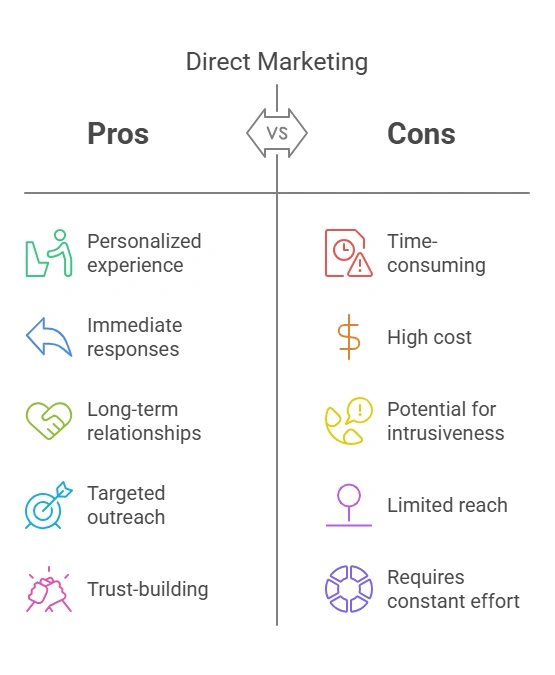
13. Event Marketing
Networking and Direct Customer Engagement
Event marketing emphasizes both brand visibility and customer relationships, allowing audience engagement directly through in-person or virtual experiences. By hosting or participating in events such as trade shows, product launches, networking gatherings, industry conferences, or experiential activations, businesses can create an immersive environment where potential customers can engage with products, learn about brand offerings, interact with company representatives and build relationships.
This type of marketing allows brands to showcase their expertise, generate excitement, and build trust through direct customer engagement. Furthermore, events provide an opportunity for networking, where businesses can forge valuable connections with industry influencers, partners, and media. This marketing strategy also serves as a platform for collecting valuable customer feedback, generating leads, and driving future sales.
14. Direct Sales
Tailor the Sales Pitch to the Individual Needs
What is marketing channel of direct response? What is marketing channel of direct sales? Or simply, direct marketing? It is a method of selling products directly to customers through personalized, one-on-one interactions. This approach can take various forms, including door-to-door sales, in-person consultations, or word-of-mouth recommendations, allowing businesses to engage with consumers in a direct and often more intimate manner.
These methods are particularly effective in industries where personal relationships and trust are paramount, such as in real estate, insurance, and high-end products. By bypassing intermediaries, businesses can establish stronger relationships with their customers, facilitate immediate feedback, address questions or objections in real-time, and create a more personalized buying experience.
15. Retail Stores
Physical stores where products are sold
A well-designed and strategically located retail store provides a physical space to showcase their products in a curated environment, where customers interact with the merchandise, seek personalized recommendations, and receive hands-on experiences that online stores cannot replicate. These brick-and-mortar locations allow consumers to directly engage with products, experience the brand, and make immediate purchases.
Retail stores also facilitate impulse buying through in-store promotions, displays, and sales staff interactions, which can increase conversion rates. Additionally, physical stores allow brands to cultivate a unique atmosphere, reinforce their brand identity, and offer exceptional customer service, which can foster customer loyalty, drive repeat visits, and complement online sales efforts contributing to overall business growth.
Traditional Marketing Channels: Do They Still Matter?
While digital channels dominate, traditional media like print advertisements, TV, and radio still have a place. They can help you reach broad audiences and can be especially useful for location-based targeting or promoting specific events.
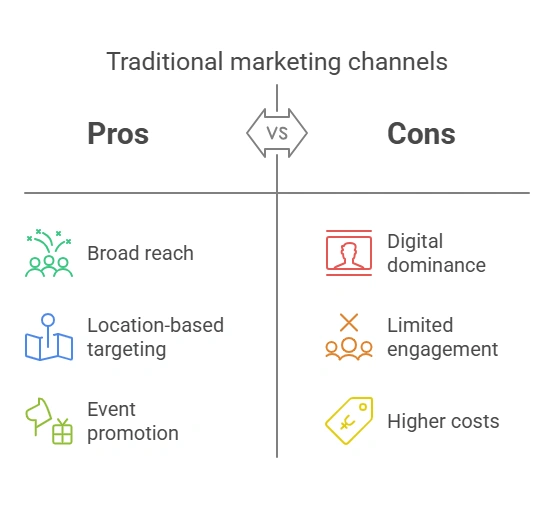
16. TV & Radio Advertising
Effective for Reaching Mass Audiences
TV and radio advertising allow for reaching large, diverse audiences, offering unmatched mass-market exposure, especially when combined with strategic scheduling during peak viewership or listening times. They provide broad demographic coverage, allowing brands to target both local and national markets with compelling, high-frequency messaging.
TV ads, with their visual and auditory elements, create a strong emotional connection with viewers, while radio ads, relying on audio alone, can efficiently communicate messages during commuting hours or while engaging in other activities.
Despite the growing prominence of digital media, TV and radio ads benefit from high levels of trust and credibility due to their longstanding presence in households, which can amplify the effectiveness of brand campaigns.
17. Outbound Calling
Making Phone calls to Potential Customers
Telemarketing is a proactive strategy that involves calling prospects to introduce products, services, or special offers, qualifying leads, and nurturing relationships through one-on-one conversations.
By integrating customer relationship management (CRM) software with outbound calling campaigns, businesses can enhance targeting, tracking, and follow-up efforts. By utilizing well-trained representatives, businesses can build rapport, address concerns, and guide prospects through the sales funnel
Unlike inbound calls, which rely on customers reaching out, outbound calling enables businesses to reach out to a targeted list of prospects based on demographic data, behaviors, or prior interactions. What is marketing channel in ths context? Outbound calling is an essential tool for driving sales conversions in both B2B and B2C environments.
18. Print Advertising
Magazines, Newspapers, and Brochures
Despite the rise of digital media, print advertising offers unique advantages, such as longer shelf life and the ability to target niche markets through specialized publications. Brochures serve as informative, portable marketing materials that can be distributed at events, in-store, or through direct mail to provide detailed product information or highlight special offers.
Magazines and newspapers allow brands to place ads in editorial environments that align with the interests and demographics of their readers, enhancing relevance and engagement.
The physical nature of print ads also allows for creative and visually compelling designs that stand out, build brand recognition, and foster a sense of trust with consumers. When used strategically, print advertising complements digital efforts by providing a multi-channel approach to brand promotion, driving both immediate responses and long-term brand loyalty.
19. Direct Mail
Sending Printed ad Materials to the Customer’s Home
Unlike digital marketing, direct mail cuts through the online noise, providing a physical, printed reminder of the brand that recipients are more likely to retain as they receive it at home or in their mailbox. Direct mail involves sending physical promotional materials that encourage consumers to make purchases, such as postcards, letters, catalogs, flyers, brochures, promotional offers, or newsletters.
A local restaurant might send out postcards offering a limited-time discount or special event invitation to residents within a certain geographic area, encouraging foot traffic and repeat visits.
Direct mail can be highly effective when combined with customer data, allowing brands to send tailored messages based on demographics, purchase history, or other behaviors. Additionally, this method can include digital touchpoints, such as QR codes or personalized URLs, to bridge the gap between offline and online engagement.
20. Catalog Marketing
A Direct Marketing Strategy Using Catalogs
Catalog marketing involves distributing physical or digital catalogs to showcase a company’s products or services, allowing customers to browse and make purchases at their convenience. This method provides an organized and comprehensive overview of offerings, often including detailed descriptions, pricing, and high-quality images, which can drive consumer interest and purchases.
A fashion brand like Nordstrom may send out seasonal catalogs to their target customers, highlighting new collections and exclusive deals.
Catalogs can be mailed directly to consumers’ homes, distributed in-store, or available for download online, providing flexibility in how they reach the audience. This marketing tool allows businesses to maintain a visual connection with potential buyers, reinforce brand identity, and provide an engaging, tangible experience. Additionally, catalog marketing can be integrated with online shopping systems through links or QR codes, blending offline and digital marketing efforts for a seamless customer experience.
21. Billboards
Bold, visible, and unforgettable messages
Billboards are a traditional yet powerful marketing tool that enables businesses to reach a wide audience through large, attention-grabbing outdoor advertisements. Positioned in high-traffic areas such as highways, busy streets, or near popular landmarks, billboards are designed to capture the attention of passersby with bold visuals, concise messaging, and strategic placement.
A fast-food chain like McDonald’s might use billboards along major highways to advertise limited-time promotions or new menu items, reaching commuters and travelers who may not be actively searching for their services but are drawn in by the visibility and timing of the advertisement.
Billboards are particularly effective for creating brand awareness, building recall, and delivering impactful messages to a broad demographic. With advancements in digital billboards, advertisers can now display dynamic, real-time content, allowing for more creative and targeted campaigns.

The Role of Marketing Channels
Now that you know what is marketing channel, let’s look at why they’re such a big deal for businesses today. Marketing channels do more than just promote your business organically or with paid campaigns—they strategically guide potential customers through the entire buying journey—from discovery to purchase and beyond—as stated below.
What is Marketing Channel: Business Growth
- Pathways for Connection
Marketing channels represent the means by which businesses reach and engage with their target audience. - Distribution of Goods and Services
They facilitate the flow of products or services from the point of production to the point of consumption. - Marketing Message Delivery
They serve as vehicles for delivering marketing messages, promotions, and information to potential and existing customers. - Building brand awareness and driving conversions
You can expand your brand’s reach and visibility while also encouraging action from your audience.
Ultimately, the role of marketing channels is to establish a relationship between your brand and the audience, fostering trust and encouraging conversions.
The Customer Journey
- Awareness
Social media, SEO, and paid ads introduce customers to your brand. - Consideration
Email marketing, content marketing, and influencer partnerships nurture leads. - Conversion
Well-optimized websites, landing pages, and retargeting ads drive sales. - Loyalty & Retention
Email campaigns, loyalty programs, and social signals keep buyers returning.

Resources for ‘What is Marketing Channel’
By understanding your audience, setting clear goals, and leveraging the right mix of digital and traditional channels, you can create a powerful marketing ecosystem that fuels long-term business growth. The future of marketing is dynamic—stay agile, monitor trends, and continuously refine your approach to stay ahead of the competition.
- Namecheap
- Hostinger
- WordTracker
- GetResponse
It offers valuable insights into choosing the right marketing channel for your business. With various tools and resources, you can discover the most effective marketing channel to enhance your online presence.
Hostinger provides essential resources for learning about different marketing channels. Their platform includes expert advice on how to use various marketing channels effectively, helping you reach your target audience.
WordTracker is a powerful keyword research tool that helps you identify the most relevant marketing channel for your campaign. Its data-driven approach ensures you choose the best marketing channel to drive results.
GetResponse is an all-in-one marketing platform that offers tools to optimize your marketing channels. From email marketing to automation, GetResponse helps you choose and refine the right marketing channel for your strategy.
FAQ – What Is Marketing Channel
What are digital marketing channels?
Digital marketing channels are platforms like social media, email, and search engines used to promote products and services online.
How do I choose the right marketing channel?
The right channel depends on your business goals, target audience, and available resources. Start by defining your goals and analyzing where your audience engages most.
Can traditional marketing channels still work in 2025?
Yes! While digital marketing is essential, traditional marketing channels like TV, radio, and print can still be effective, especially for reaching broad audiences or local markets.







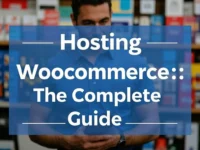

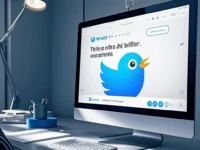






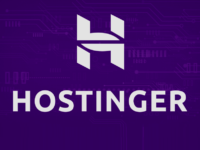
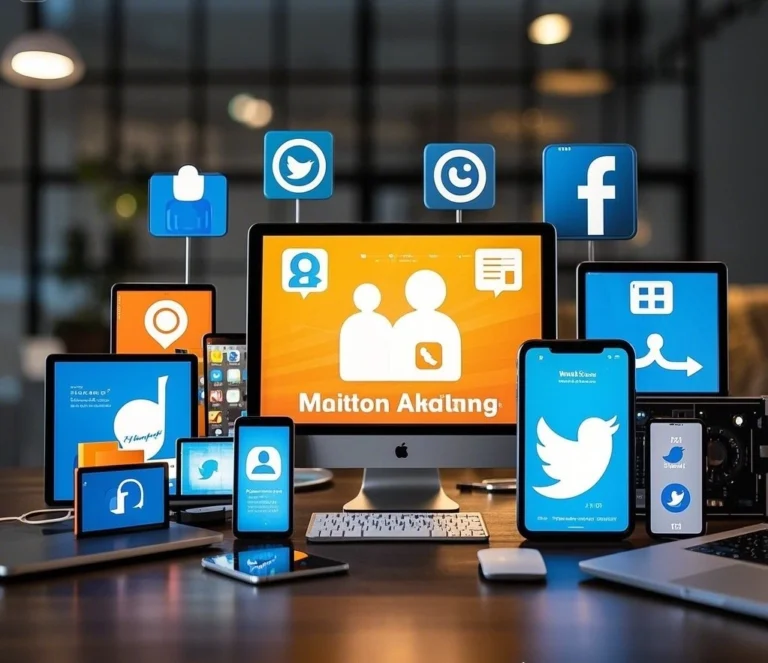


0 Comments